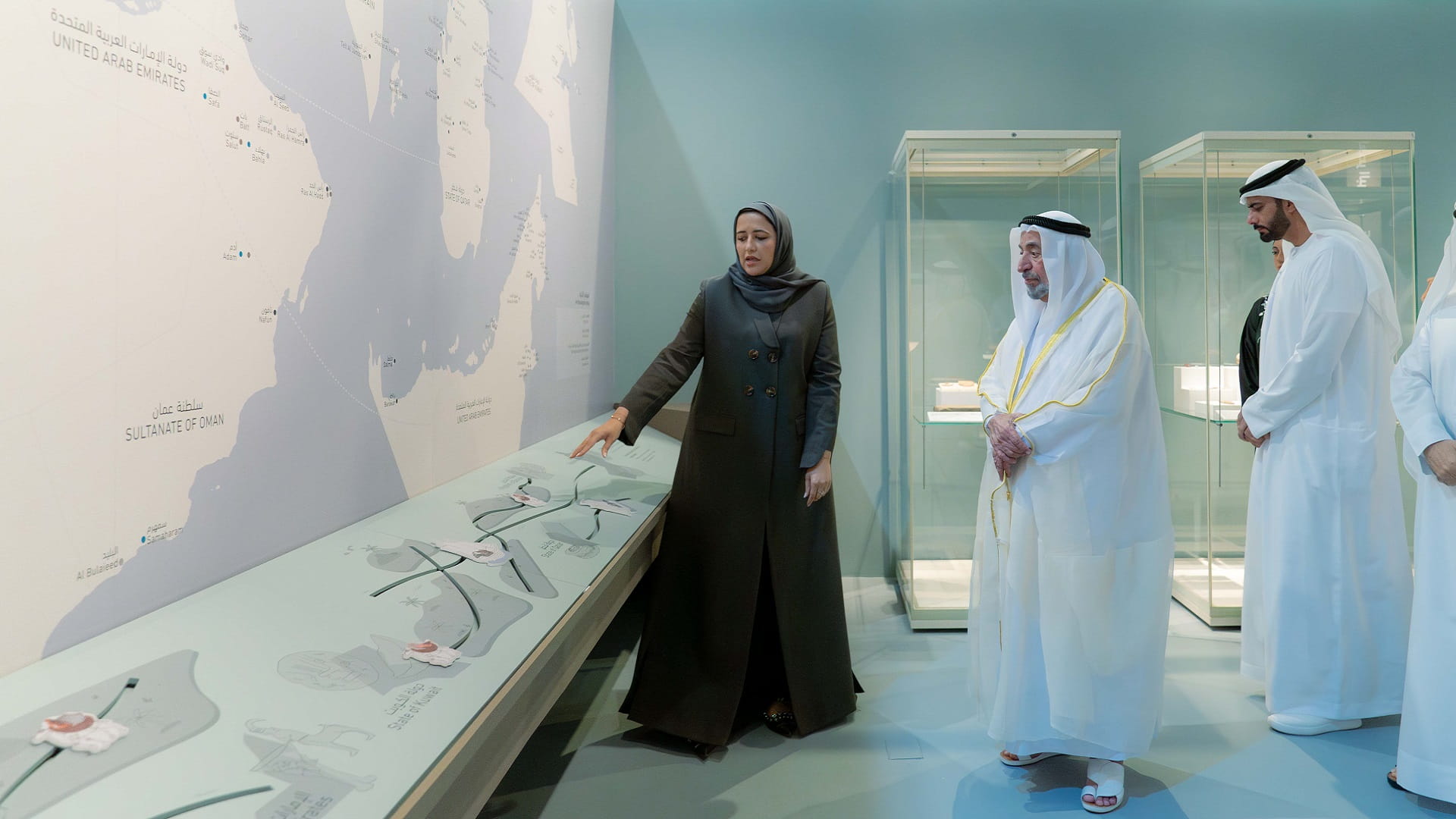
Loading...

Loading...
 The exhibition which is organized by Sharjah Museums Authority in collaboration with the Ministry of Culture and Youth showcases an array of artefacts from six countries: the United Arab Emirates, the Kingdom of Bahrain, the Kingdom of Saudi Arabia, the Sultanate of Oman, the State of Qatar, and the State of Kuwait.
The exhibition which is organized by Sharjah Museums Authority in collaboration with the Ministry of Culture and Youth showcases an array of artefacts from six countries: the United Arab Emirates, the Kingdom of Bahrain, the Kingdom of Saudi Arabia, the Sultanate of Oman, the State of Qatar, and the State of Kuwait.  His Highness, the Ruler of Sharjah, reviewed the exhibition's array of artefacts including hunting instruments, weaponry, ceramic and stone implements, ornamental pieces, seals, personal adornments, and agricultural tools, and listened to a brief about the history of human evolution across the Gulf Cooperation Council nations from ancient times to the present, and about the Arabian Peninsula's central role in human settlement, culture, and trade. His Highness also listened to a briefing about the region's advancements during the Neolithic Age, 7000 years ago, particularly its interactions with Mesopotamia, leading to the adoption of new practices like the domestication of sheep, goats, and cattle, the use of coloured pottery, and specific burial practices.
His Highness, the Ruler of Sharjah, reviewed the exhibition's array of artefacts including hunting instruments, weaponry, ceramic and stone implements, ornamental pieces, seals, personal adornments, and agricultural tools, and listened to a brief about the history of human evolution across the Gulf Cooperation Council nations from ancient times to the present, and about the Arabian Peninsula's central role in human settlement, culture, and trade. His Highness also listened to a briefing about the region's advancements during the Neolithic Age, 7000 years ago, particularly its interactions with Mesopotamia, leading to the adoption of new practices like the domestication of sheep, goats, and cattle, the use of coloured pottery, and specific burial practices.  During his exhibition tour, His Highness observed the evolution of agriculture in the third millennium BC, noting how it spurred the rise of advanced local civilizations notably Dilmun (encompassing areas of Bahrain, parts of Saudi Arabia, and Kuwait) and Majan (spanning the UAE and Oman) which witnessed the establishment of residential settlements in oases and valleys, the development of handicrafts, and the creation of intricate trade networks that connected these settlements both internally and with regions like Mesopotamia and Sindh, leveraging the area's strategic position on the trade route.
During his exhibition tour, His Highness observed the evolution of agriculture in the third millennium BC, noting how it spurred the rise of advanced local civilizations notably Dilmun (encompassing areas of Bahrain, parts of Saudi Arabia, and Kuwait) and Majan (spanning the UAE and Oman) which witnessed the establishment of residential settlements in oases and valleys, the development of handicrafts, and the creation of intricate trade networks that connected these settlements both internally and with regions like Mesopotamia and Sindh, leveraging the area's strategic position on the trade route. His Highness, the Ruler of Sharjah, received insights on the formation of ancient Arab kingdoms approximately 3,000 years ago along principal trade routes, which contributed to the development of a distinct Arab identity during a period that was marked by significant advancements in writing, industry, and architecture.
His Highness, the Ruler of Sharjah, received insights on the formation of ancient Arab kingdoms approximately 3,000 years ago along principal trade routes, which contributed to the development of a distinct Arab identity during a period that was marked by significant advancements in writing, industry, and architecture. Accompanying the exhibition, Sharjah Archaeology Museum is hosting a range of inclusive and engaging activities for visitors of all ages and abilities that are designed to complement the themes of the exhibition and offer unique, hands-on experiences.
Accompanying the exhibition, Sharjah Archaeology Museum is hosting a range of inclusive and engaging activities for visitors of all ages and abilities that are designed to complement the themes of the exhibition and offer unique, hands-on experiences.